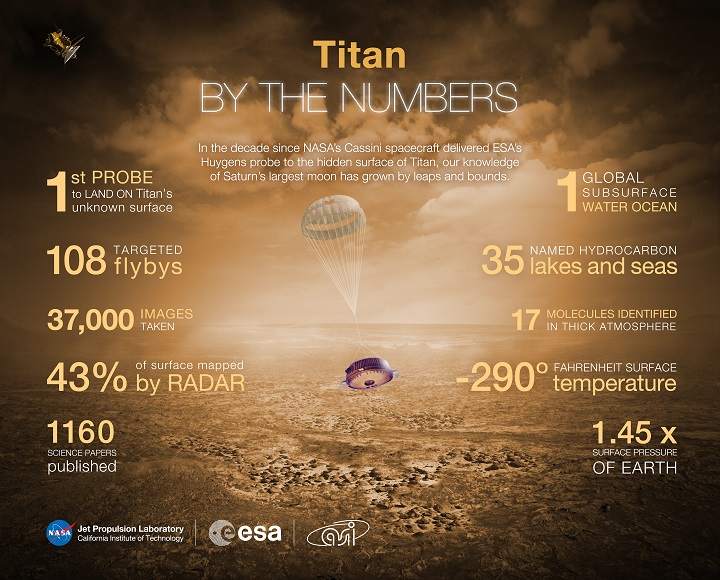Ten years ago, an explorer from Earth parachuted into the haze of an alien moon toward an uncertain fate. After a gentle descent lasting more than two hours, it landed with a thud on a frigid floodplain, surrounded by icy cobblestones. With this feat, the Huygens probe accomplished humanity’s first landing on a moon in the outer solar system. Huygens was safely on Titan, the largest moon of Saturn.
The hardy probe not only survived the descent and landing, but continued to transmit data for more than an hour on the frigid surface of Titan, until its batteries were drained.
Since that historic moment, scientists from around the world have pored over volumes of data about Titan, sent to Earth by Huygens — a project of the European Space Agency — and its mothership, NASA’s Cassini spacecraft. In the past 10 years, data from the dynamic spacecraft duo have revealed many details of a surprisingly Earth-like world.
In addition to the technical wizardry needed to pull off this tour de force, international partnerships were critical to successfully delivering the two spacecraft to Saturn and Titan.
“A mission of this ambitious scale represents a triumph in international collaboration,” said Earl Maize, Cassini Project manager at NASA’s Jet Propulsion Laboratory in Pasadena, California.
“From the mission’s formal beginning in 1982, to Huygens’ spectacular landing 23 years later, to the present day, Cassini-Huygens owes much of its success to the tremendous synergy and cooperation between more than a dozen countries. This teamwork is still a major strength of the project as the Cassini orbiter continues to explore the Saturn system,” Maize said.
